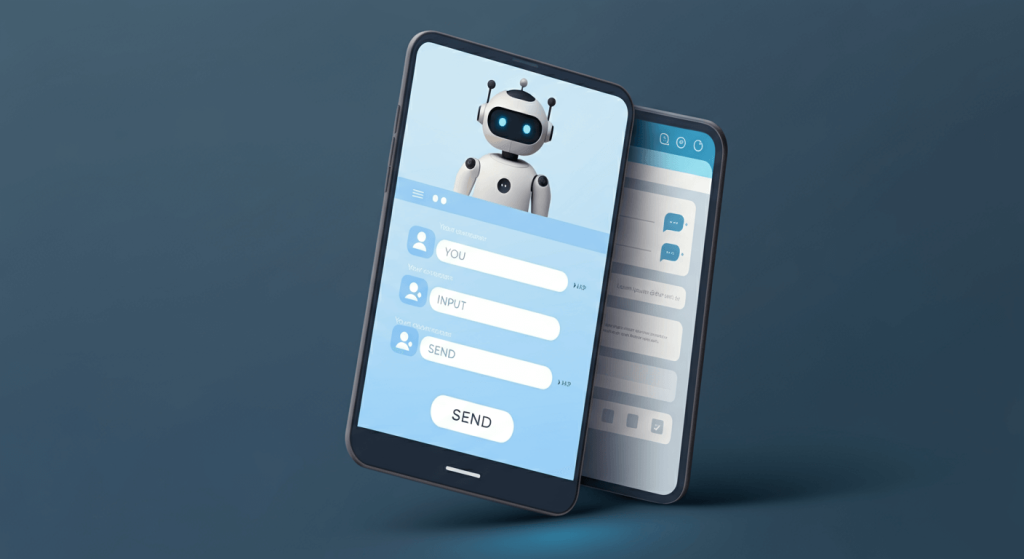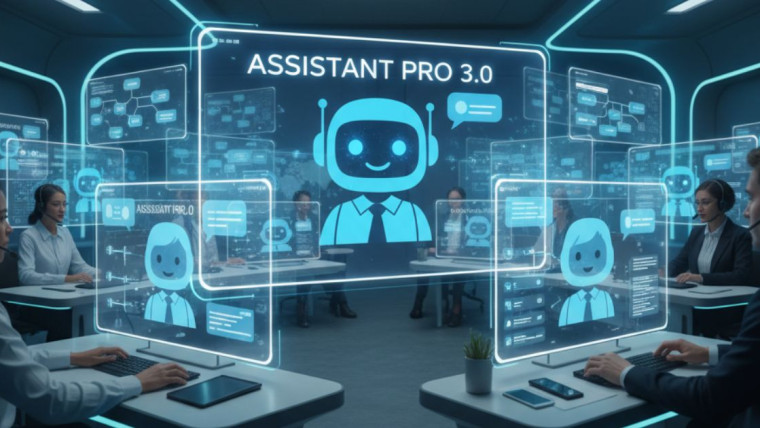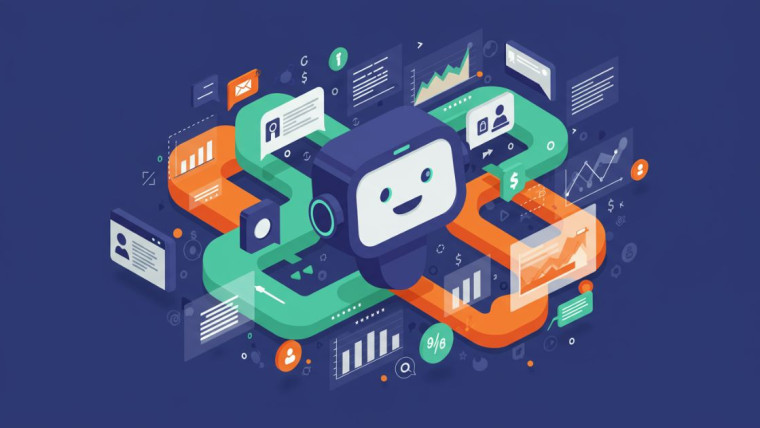Chatbots are now a necessity for businesses seeking to scale their customer service and operations. However, many companies struggle to create chatbot experiences that appear human and genuinely useful. You can irritate your customers and damage your brand if you have a poor chatbot user experience.
This comprehensive guide explores best practices for crafting engaging chatbot conversations. You will learn to develop chatbots that users can interact with in natural language, gather information, solve problems, and enhance your overall customer service. Whether you’re designing your very first chatbot or improving an existing one, these are the conversation design principles that will help you design better chatbot interactions.
Understanding Chatbot UX Fundamentals
Chatbot UX is all about the details of how people communicate with your robot helper. They encompass flow of conversation, timing of response, type of language, and the entire user journey. A good chatbot UX offers the user an intuitive, human-like experience, while bad design leads to confusion and frustration.

Why Chatbot UX Matters
Studies indicate that 67% of customers have engaged with a chatbot for support in the past year. However, despite disastrous experiences with chatbots, many users still prefer human agents. Well-executed chatbot UX can serve to fill the gap, offering rapid, accurate, and satisfying experiences.
Good chatbot UX introduces several advantages:
- Cuts customer service expenses by answering common queries
- Is available for customer support 24/7
- Enables faster answers to frequently asked questions
- Gathers important customer data and information
- Customers’ customer service and a decrease in staff commensurate with the scale.
Essential Conversation Design Principles
Begin with a Clear Purpose and Definition
Story: Your AI chatbot needs to have predetermined needs that it fulfills. Set specific boundaries for what your chatbot can and can’t do before crafting conversations. This clarity plants the right user expectations and keeps them from becoming angry.
Bear the following questions in mind when scoping your chatbot:
- What will be the specific issues that your chatbot will address?
- What actions ought to be performed by human workers instead?
- Where does your chatbot fit in your overall customer service plan?
Design for Natural Conversation Flow
Automated conversations appear more human and engaging when natural conversation design is applied to chatbots. Users should feel like they are conversing with an informed assistant, rather than filling a form.
Some critical aspects of natural conversation flow are:
- Friendly Greetings: Begin conversations with warm, personalized greetings
- Conversational: You should never sound like a robot, nor too stuffy
- Asking for more back: Demonstrate that you care about user needs and get the needed info
- Providing context: Refer to earlier parts of the conversation to keep the thread going
Implement Progressive Disclosure
Progressive disclosure unveils information as needed, depending on user requirements. In this way, users are not overloaded with choices, but can obtain detailed information when required.
Creating Effective Chatbot Personas

Establish a Unified Voice and Tone
The personality of your chatbot represents your brand, but it must also be helpful and professional. Uniformity of voice and tone across all interactions fosters a sense of trust and comfort.
Consider these persona elements:
- Personality attributes: Is your chatbot friendly, formal, fun, or firm?
- Language style: Formal or casual? Technical or accessible?
- Emotional scope: How does your chatbot respond when users are annoyed or happy?
Match User Expectations
Your chatbot character must reflect what your users expect of your industry and brand. A banking chatbot may adopt a more formal tone than one for a casual dining restaurant. Take some time to study your audience and understand how they prefer to be addressed.
Optimizing Chatbot Response Strategies
Provide Clear and Concise Responses
Chatbots are designed for users who want fast, accurate top-line answers. Overly long responses can be overwhelming to users and impede task completion. Strive for answers that are comprehensive, yet concise.
Best practices for response optimization:
- When you have a list that is worthy of bullet points and also offers choices 1.
- Split long replies into several short messages
- The most important information should be presented first
- Provide relevant links for users who want/need more information
Handle Errors Gracefully
Your AI chatbot is likely to encounter situations it cannot handle. How you model these error responses will significantly impact user experiences. Better error handling would recognize the quirk and suggest a workaround.
Effective error handling strategies include:
- Admitting when the chatbot does not comprehend
- Offering alternative phrasings or options
- Clear pathways to human support
- Serving customers in a pleasant manner, even when no help was available
Use Quick Reply Options
The quick reply buttons you receive make it easy for users and lead to success! They work especially well for frequently asked questions or when a user needs to choose from a smaller number of responses.
Strategic use of quick replies:
- Give 2-4 choices to not intimidate the user
- Use clear, action-oriented language
- If applicable, add an “Other” answer choice
- Combine with free-text for flexibility
Enhancing User Engagement
Personalize Interactions
Personalization adds relevance and interest to chatbot conversations. Leverage who is driving decisions and user data to tailor responses and guidance while being mindful of privacy lines.
Personalization opportunities include:
- Greeting and replying to a user by name
- Referring to a prior discussion or purchase increments
- User preference-based recommendations
- Adapting talk style according to user behaviour
Implement Contextual Awareness
It’s “context aware,” meaning that your chatbot knows what’s being discussed more generally and what is happening with the user. This then reduces the amount of information users have to supply, which in turn leads to more natural interactions.
Key aspects of contextual awareness:
- Recalling something that’s been said previously in the interaction
- Inferring user intentions beyond the precise wording
- Response adaptation with consideration of the history of the conversation
- Consistent state between interaction sessions
Technical Considerations for Better UX
Optimize Response Times
Chatbots are supposed to answer immediately. Slower response time might irritate the users and they might ditch the conversation. Aim for response times under 2 seconds for the majority of interactions.
Strategies for faster responses:
- Pre-load common responses and information
- Leverage typing indicators for more than long processing periods.
- Rendition is an asynchronous backend for fast data retrieval
- Think about response caching for frequently asked questions
Ensure Multi-Platform Consistency
Your chatbot can be deployed on various platforms and span multiple devices. Unified experience and quality across all media produce a great UI/UX experience.
Multi-platform considerations:
- Enable proper layout for different screen sizes
- Keep your dialogues natural and consistent.
- Promote feature parity where feasible
- Test extensively on every supported platform.
Plan for Scalability
Once your chatbot reaches a certain size, it should be able to handle higher-volume conversations in a scalable manner. Architect your system to scale well.
Scalability planning includes:
- Load testing under projected user levels
- Implementing efficient database queries
- Content Delivery Networks for Media
- Monitoring system performance continuously
Testing and Iteration Strategies
Conduct User Testing
Common user testing unearths the divide between what you designed and what users actually do. Real users using real tasks to test for potential improvements.
Effective testing approaches:
- Source users from the demographics you’re targeting
- Test individual conversational flows and scenarios
- Collect Quantitative and Qualitative Feedback
- Iterate based on testing results
Monitor Conversation Analytics
With analytics, you can see how your users are engaging with your chatbot and where there is room for improvement. Monitoring of critical factors for the success and potential for optimization.
Important metrics to monitor:
- Conversation completion rates
- User satisfaction scores
- Most typical intents & questions from the user-side perspective
- Hand-off rates to human agents
Implement Continuous Improvement
Like with many things in software, chatbot UX betterment is a process. Frequent updates, informed by user feedback and performance data, enable your chatbot to remain effective and up to date.
Continuous improvement practices:
- Review conversation logs regularly
- Update answers in accordance with user feedback
- Implement additional features, tailored to the user demands
- Iterate chatflows with insights from the analytics
- Keep up with the latest trends in the chatbot space
Future-Proofing Your Chatbot UX Design
Prepare for Advancing AI Capabilities
AI is evolving fast. Orient around a chatbot architecture that scales to support advancements in natural language processing and understanding.
Future-proofing strategies:
- Use modular design approaches
- Keep up on artificial intelligence technology trends
- An overview of voice and multimodal interaction planning
- Consider integration with emerging technologies
Maintain Human-AI Balance
With advancing AI capabilities, human oversight is necessary for complex situations and emotional nurture. Create transparent paths to escalation and always keep human agents present.
Balancing AI and human support:
- Set specific requirements for human handoffs
- Human agents trained on chatbot insights
- Keep AI and human support in sync
- Regularly monitor the performance of the portfolio and rebalance the mix as needed
Building Better Chatbot Experiences
To have a great chatbot UX, you need to focus on conversation design, user convenience, and technical realization. Follow these best practices to create AI chatbots that work for both your users and your business needs.
Because remember, great chatbot UX is an iterative process. Start from a stable foundation, run real user tests often, and continue to iterate your direction based on your data and feedback. Focus on solving actual user problems instead of demonstrating technology’s capabilities.
An investment in a well-designed chatbot UX will yield benefits in the form of happier customers who require less support and will likely view your brand in a more favourable light. With the evolution of AI technology, companies that bridge the gap between wish and realization will be the ones that deliver the best chatbots.








Chatbots for Customer Retention: How AI Improves Loyalty and Reduces Churn
Transforming Employee Onboarding with AI Chatbots: A Step-by-Step Guide
Emergency Response Chatbots: Revolutionizing Crisis Management with AI
Revolutionizing Recruitment: How Chatbots Streamline Hiring Processes and Elevate Talent Acquisition